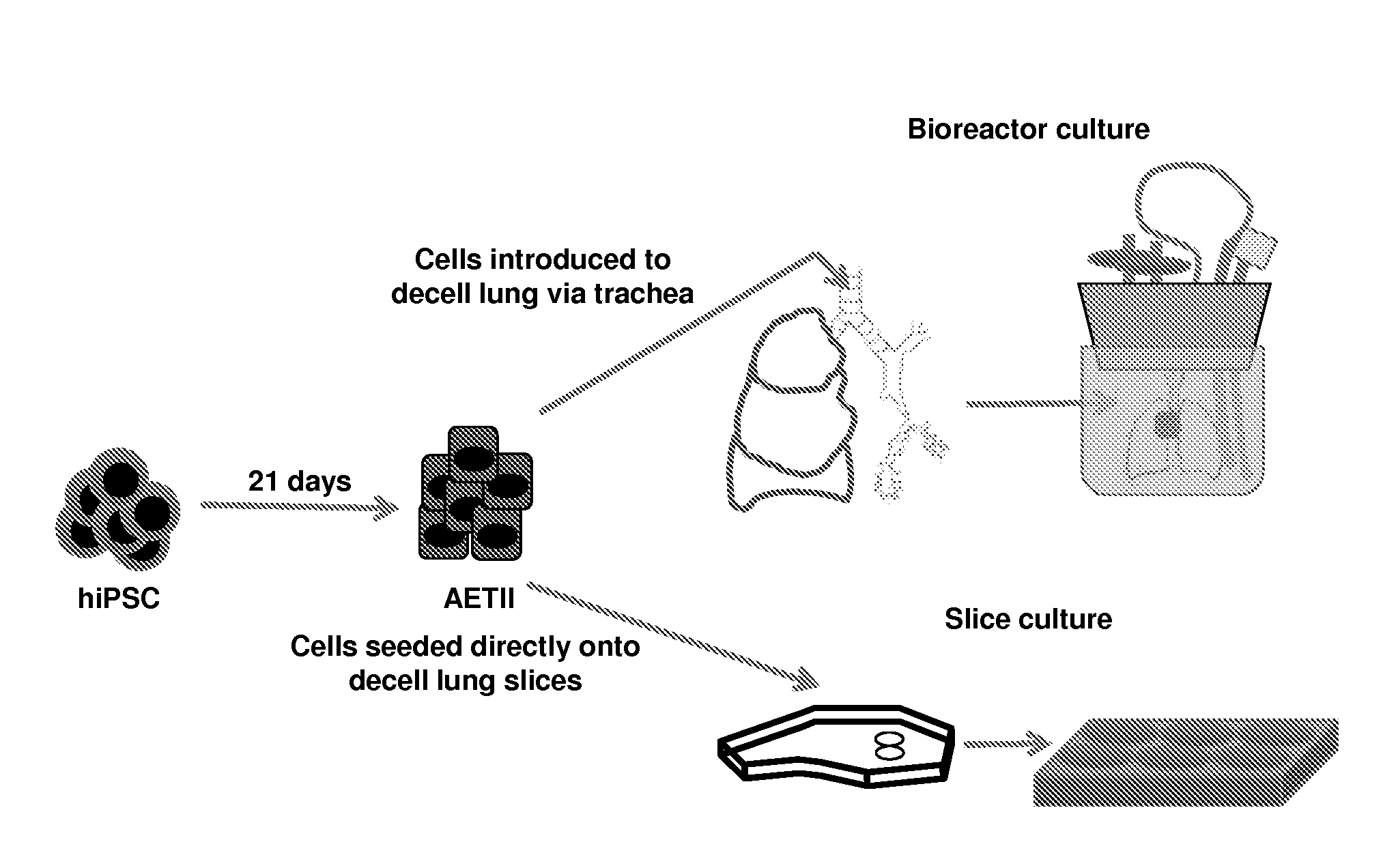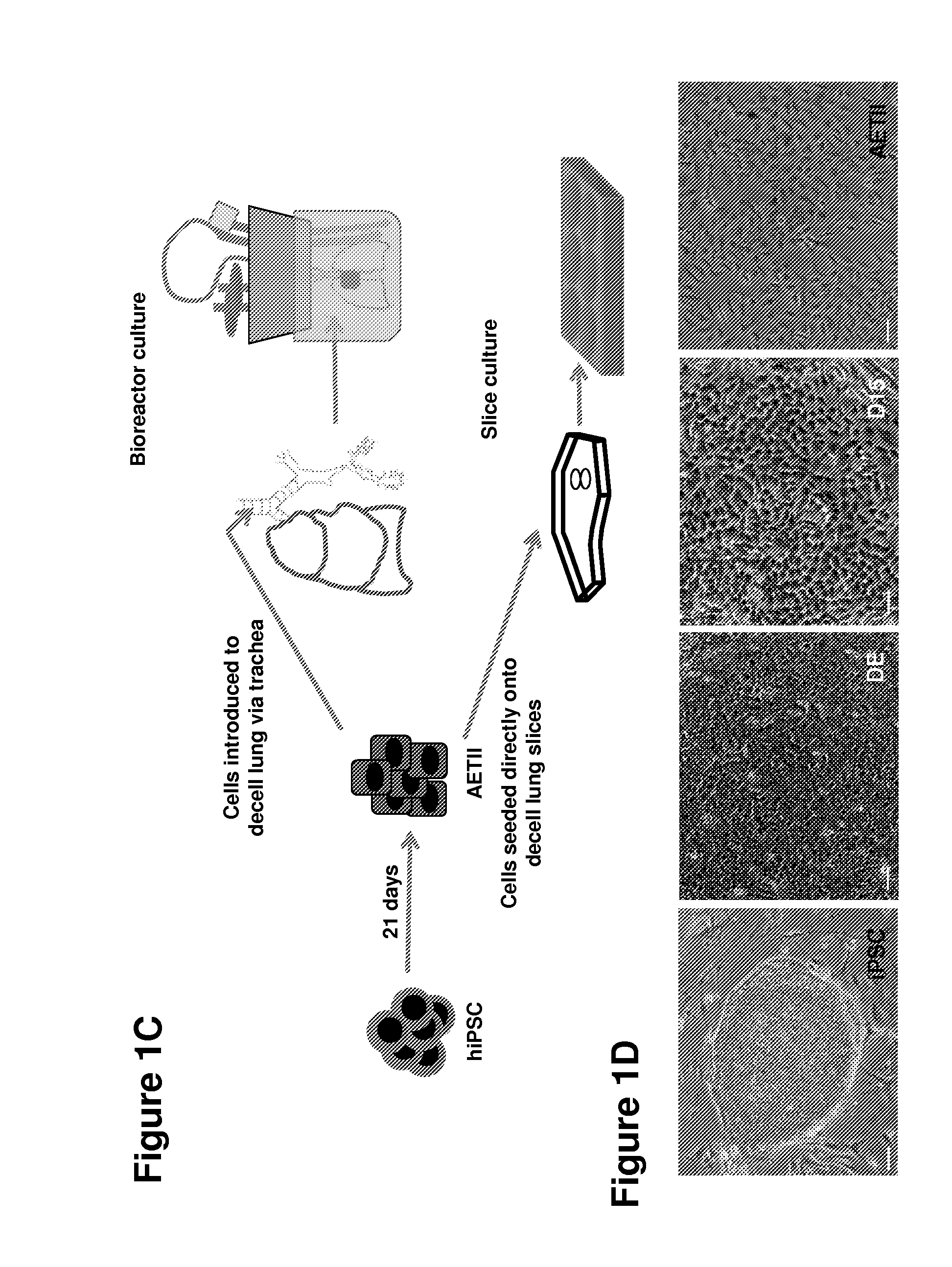Differentiation of Human IPS Cells to Human Alveolar Type II Via Definitive Endoderm
- Summary
- Abstract
- Description
- Claims
- Application Information
AI Technical Summary
Benefits of technology
Problems solved by technology
Method used
Image
Examples
experimental examples
[0202]The invention is further described in detail by reference to the following experimental examples. These examples are provided for purposes of illustration only, and are not intended to be limiting unless otherwise specified. Thus, the invention should in no way be construed as being limited to the following examples, but rather, should be construed to encompass any and all variations which become evident as a result of the teaching provided herein.
[0203]Without further description, it is believed that one of ordinary skill in the art can, using the preceding description and the following illustrative examples, make and utilize the compounds of the present invention and practice the claimed methods. The following working examples therefore, specifically point out the preferred embodiments of the present invention, and are not to be construed as limiting in any way the remainder of the disclosure.
example 1
Differentiation and Characterization of Alveolar Type II Cells from Human Induced Pluripotent Stem Cells
[0204]The experiments presented herein were designed to explore whether lung tissue can be regenerated in vitro. A relatively homogeneous population of alveolar epithelial type II (AETII) and type I cells (AETI) was generated from human iPS cells which had phenotypic properties similar to mature human alveolar type II and type I cells. Up to 97% of cells were positive for surfactant protein C, 95% for Mucin-1, 93% for surfactant protein B, and 89% for the epithelial marker, CD54. Additionally, exposing AETII to a Wnt / β-catenin inhibitor (e.g., IWR-1) changed the iPSC-AETII like phenotype to a predominantly AETI like phenotype. Of the cells that were AET1 cells, more than 90% of were positive for the type I markers, T1α and caveolin-1. Acellular lung matrices were prepared by treating whole rat or human adult lungs with decellularization reagents, followed by seeding these matrices...
PUM
 Login to View More
Login to View More Abstract
Description
Claims
Application Information
 Login to View More
Login to View More - R&D
- Intellectual Property
- Life Sciences
- Materials
- Tech Scout
- Unparalleled Data Quality
- Higher Quality Content
- 60% Fewer Hallucinations
Browse by: Latest US Patents, China's latest patents, Technical Efficacy Thesaurus, Application Domain, Technology Topic, Popular Technical Reports.
© 2025 PatSnap. All rights reserved.Legal|Privacy policy|Modern Slavery Act Transparency Statement|Sitemap|About US| Contact US: help@patsnap.com



